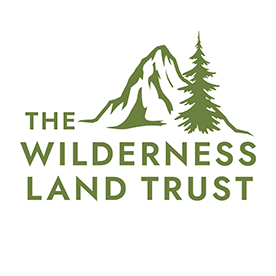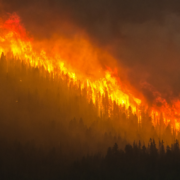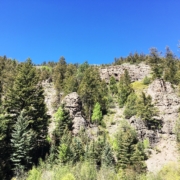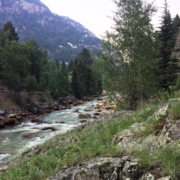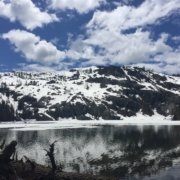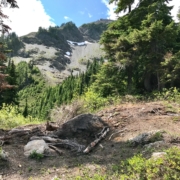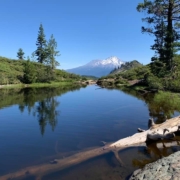How private inholdings impact wilderness wildfire management
July 14, 2023
We often share that our work to remove private inholdings in wilderness reduces management issues on our public lands, but what exactly does that mean?
When public land managers must account for a patchwork of ownership, and protection, within a landscape, they are left trying to manage for all those different kinds of lands at once. Sometimes this looks like deciding, or litigating, how a road that cuts through wilderness to an inholding is used. Sometimes it means closing down a whole trail network because public access through an inholding is blocked. And, as wildfire season is upon us across the west, sometimes it means changing how wilderness fires are managed and limited firefighting resources are allocated.
Wildfire management on public lands is certainly a topic with no shortage of strong opinions. Many of you reading likely have your own varying ideas of how fire in wilderness or on public lands should, or shouldn’t, be managed. Some may even be shaped by personal experiences with your property or places you love being impacted by wildlife. But, within the current system of management, there’s no doubt that the presence of wilderness inholdings can make wildfire management more complicated and often more costly.
In the past few decades, science has advanced our understanding of how wildfire can benefit natural processes as it creates a mosaic of forests at different stages of maturity and diversity in vegetation across the landscape. This isn’t new knowledge, it’s been practiced by indigenous communities for thousands of years. But the benefits of allowing this natural mosaic to evolve for ecosystems and future fire management have led to a relatively new approach to let fire burn itself out within wilderness, focusing on protecting structures and containing fire away from people and property.
However, once private inholdings spread throughout wilderness enter the equation, fire managers often must divert limited resources to focus on protecting those inholdings, particularly when there are homes or cabins on them. One study found that in the Frank Church River of No Return Wilderness “fire management within the FCRNRW is complicated by the presence of multiple large inholdings…[which] calls for wilderness fire management decisions nearly every year to be made by balancing the values at risk inside the wilderness against the scarcity of resources available.” Another study found that within one fire season, the cost of wildland firefighting ranged from $411/acre where there were only six structures threatened, to $22,634/acre where 260 structures were threatened, showing how the presence of private lands and structures within public landscapes can exponentially increase the cost of firefighting. This doesn’t mean that resources shouldn’t be concentrated on saving homes, and lives, when necessary, only that in a wilderness context it can create conflicting goals and approaches in a single area.
Of course, when a private inholding landowner decides to work with the Trust to leave a legacy of conservation by adding their property to wilderness, these kinds of management issues are likely not the most important driver in their decision. But it is a secondary benefit of creating unified protection across our wilderness landscapes. With each inholding that is removed, there is one less potential complication to allowing important natural processes to room to work, using limited resources wisely, and keeping our wildland firefighters safe.
